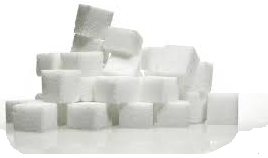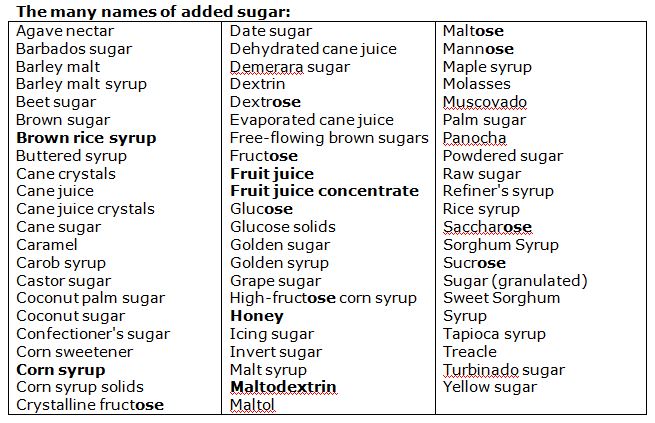 The FDA has finally taken an official stance against added sugar, recommending that consumers limit their total daily intake of added sugar to no more than 10 percent of their daily calories. “Added sugar” is simply sugar added to food during the production process; 10 percent amounts to an average of about 50 grams (12.5 teaspoons) per day, or about as much sugar as in a single can of Coke. But with over 60 forms of added sugar, it can easily be disguised on ingredient labels. Current labels don’t differentiate between naturally occurring sugars versus added sugars, so sometimes you need to check the ingredients. I particularly want to highlight that syrups, many terms ending in "-ose," fruit juice, fruit juice concentrate, honey, and maltodextrin are all forms of added sugar (yes, even honey!). Even the ingredient lists can be deceiving. Food manufacturers may conceal the amount of sugar added to a product by adding multiple forms of sugar with different names. Since ingredient labels are ordered by weight, splitting up added sugar into many forms makes it less likely to appear as the first ingredient.
Added sugar provides zero nutritional benefits, which is why added sugar is frequently described as “empty calories.” The human body actually doesn’t need any carbohydrates in the form of sugar. In fact, the FDA cap of 50 grams per day is actually quite high, and up to double the limit that many other organizations support. The American Heart Association endorses keeping added sugar to about 24 grams (six teaspoons) for women and about 36 grams (nine teaspoons) for men. The World Health Organization recommends lowering the cap to 5% of daily calories, or roughly 25 grams (6 teaspoons) per day, in order to provide additional health benefits and reduce dental cavities. Despite limited studies comparing sugar caps of 10% vs. 5% of daily calories, vast sugar shortages in 1946 during WWII provided a “natural experiment” that found even lower sugar intake was associated with fewer cavities. If you don’t drink soda or other sugar-sweetened beverages, it shouldn't be too hard to consume ~25g added sugar per day, as long as you recognize that many seemingly healthy foods (e.g., yogurt) often have both high- and low-sugar options. In my experience, you can find or create almost every food item without added sugar, and it often tastes just as good, if not better. Check out my next blog post for over a dozen ways I limit added sugar, not taste.
1 Comment
Katie L.
12/24/2015 07:41:11 am
Thanks for the great post, Mike! Is there any way that you can share a document revealing the foods you eat on a daily basis? Would be much appreciated by readers!
Reply
Your comment will be posted after it is approved.
Leave a Reply. |
©2017 WeighingInBlog. All rights reserved. 401 Park Drive, Boston, MA





 RSS Feed
RSS Feed

